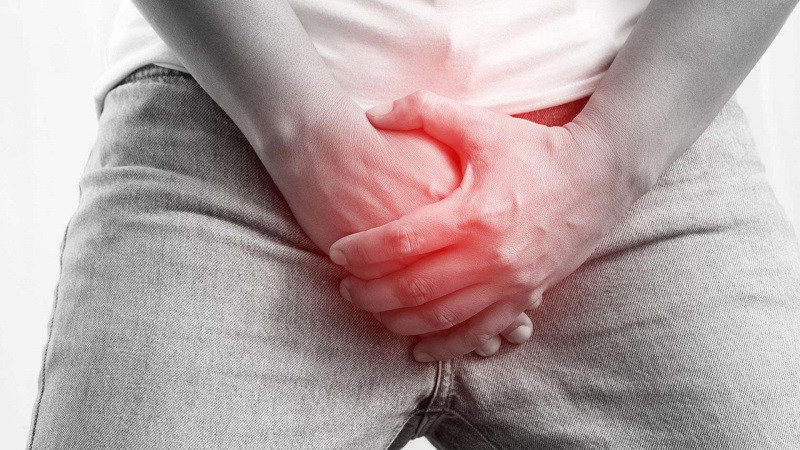10 Pounds in 30 Days: A Trainer's Realistic Guide to Weight Loss

We believe in setting realistic fitness goals; after all, we will never promise you six-pack abs by Sunday or a size 12 to 6 in a week.
We hear you when you say you want to lose 10 pounds in a month. Let's talk about it.
The Best Way to Lose 10 Pounds in a Month
It is not easy to lose ten pounds in a month, but it is possible if you are committed.
If you want to lose 10 pounds in a month, proper nutrition, exercise, and a serious commitment are all you will need.
Lose 10 pounds in a month with these tips from your personal trainer
Calorie Counting Is Important
There is no doubt that calorie intake is critical to losing weight. It is important to pay attention to the type of calories you consume (are they coming from healthy foods or processed packaged TV dinners?) most of all.
The number of calories you consume still matters, especially when you have the aggressive goal of losing 10 pounds in a month.
If you want to lose weight, you have to burn more calories than you consume. You have to keep an eye on your calorie intake.
Exercise and your resting metabolic rate burn calories.
The resting metabolic rate is how many calories you burn at rest, just by occupying your body.
To lose 10 pounds in a month, how many calories should you eat
In order to lose weight, the average woman should aim to consume about 1,600 calories per day, regardless of her caloric needs.
Keep a detailed food journal or use a food logging app like MyFitnessPal to track your calorie intake.
Journaling is also a positive mental health habit that will help you lose weight.
Here is a sample day of 1,600 calories:

Weight Loss With Clean Eating
You can never get fat from eating too many fruits and vegetables, so load up your plate with veggies, fruits, lean protein, and healthy fats.
- Put an end to processed, packaged, and artificial foods.
- Make weight loss easier by giving up soda.
- Sugar should be eliminated from your diet.
These are the things you need to change your diet for good, forming lifelong habits based on Michael Pollan's philosophy: "Eat real food. Not too much. Mostly plants."
The first half of the weight loss equation can be solved by counting calories (yes, it matters) and making those calories healthy and clean.
Clean Eating Tips from Experts
Other weight loss tips when it comes to eating include:
Slow down when you eat
You'll avoid overeating if you eat more slowly. Your body is able to recognize fullness better when you eat more slowly.
Fiber should be added
Because you're consuming fewer calories when you're trying to lose weight, many people feel hungry.
You will feel fuller for longer when you add fiber to your diet! Fiber also helps to remove waste from the body, ensuring regularity and reducing bloating!
Drink water!
In addition to removing sodas from your diet, you should increase your water intake! Many times, when we're thirsty, we reach for a snack, mistaking our thirst for hunger.
Hydration also helps our bodies perform at their best. It is truly one of the best things you can do for your health!
*Reduce your intake of refined carbohydrates
Carbohydrates that have been refined have been stripped of their nutrients and fiber, causing blood sugar spikes and increased hunger.
Replace refined carbs like white bread, breakfast cereals, and heavily processed prepackaged foods with whole grains such as quinoa, oats, brown rice, and barley.
Start your day with a high-protein breakfast
Eating a high-protein breakfast can help you lose weight. Consuming more protein can reduce the number of calories you need to consume every day. Consuming high-quality protein can also reduce the amount of calories you consume.
Eggs, cheese, yogurt, eggs, and peanut butter are high-protein foods. One study in 20 adolescent girls found that protein intake decreased hunger hormone levels and increased feeling of fullness.
Cardio and strength training should be combined
There is no way to lose weight solely based on your diet. Yes, it's half the battle, but you won't see any results without exercise.
When it comes to exercising, many people are unsure of where to begin, whether they've avoided it for years or have fallen into a slump.
In order to lose weight, you need to meet a few minimum exercise requirements each week:
To lose 10 pounds in a month, how much exercise should you do?
You should do at least 150 minutes of moderate, heart-pumping cardiovascular exercise each week. You can do it through running, biking, or any other activity that gets your heart rate up.
The key to a revved-up metabolism is strength training. The more muscle you have on your body, the higher your resting metabolic rate. (Your resting metabolic rate is how many calories you burn at rest.)
Consider circuit training and interval training
Try HIIT workouts to get both your cardio and strength done at once.
A circuit or interval workout requires you to give your all-out effort, so they get your heart pumping hard and use a series of strength moves as well. This helps you do both cardio and strength at the same time, so it's great when you're short on time.
If you want to lose weight, you should train in different heart rate zones. (Use our heart rate calculator to find your own personal training zones!)
If you want to lose 10 pounds in a month, try these workouts
Beginner's Guide to HIIT
- Workout with a medicine ball for the whole body
- Kettlebell Workout For Beginners: Complete Guide
- Challenge to burn belly fat
- Weight Loss Elliptical Workout
Stress should be minimized and sleep should be prioritized
In addition to diet and exercise, there are other factors that can make losing weight difficult. These two factors are often overlooked when looking to lose weight, but they do make a difference.
The stress hormone cortisol has been linked to belly fat, and sleep deprivation affects the hormones that regulate your appetite, leptin and ghrelin, causing you to feel unsatisfied and overeat.
You can help yourself lose weight by managing daily stressors and getting 7-8 hours of sleep each night.
Balance Your Hormones
When you're going through perimenopause or menopause, hormonal issues can also make losing weight more challenging. You're not alone if you're experiencing the menopausal spread around your midsection, and no, you're not mad: losing weight gets harder with age. But it's not impossible.
For help balancing your hormones and losing weight in menopause, use the following resources:
- Lose weight by balancing these 4 hormones
- Menopausal Belly Fat: 9 Ways To Lose It
- Women over 50 should take these 7 vitamins
- A Positive Approach to Menopause
- Diet for menopause
Consult your doctor or a nutritionist if you're still having trouble losing weight despite dietary and lifestyle changes.
There may be other medical or psychological barriers at play that someone can help you address in a healthy manner during your weight loss journey.
In a month, how much weight can you lose?
There's a possibility of losing 10 pounds in one month, but it's not an easy task and it's not a guarantee. Getting rid of weight quickly depends on the individual and their metabolic body type. Some people just have a much easier time losing weight than others, despite sometimes seeming unfair.
In a month, you're unlikely to lose 40 pounds, and if the scale moves drastically, it's likely due to water retention.
Weight Loss That Is Safe
Weight loss goals should be realistic according to the American Heart Association, and a loss of 1–2 lbs per week is considered a reasonable goal for most people. CDC: People who lose 4-8 pounds per month are more likely to lose it. In order to maintain a weight loss rate of 1/2 lb per week, the U.S. Department of Agriculture recommends eating healthy and exercising in a healthy way.
While the scale may have gone down, water weight isn't exactly the type of weight you're trying to lose.
Our weight loss plan above is sustainable and can be used for long-term weight loss. Looking to lose 10 pounds in a month? Great!
Burn more calories than you consume. Eat whole foods. Reduce your sugar intake. Hydrate.
The best part is that you'll feel so great that you'll keep going long beyond a month when you implement the above steps and then CONTINUE them for long-term results.









